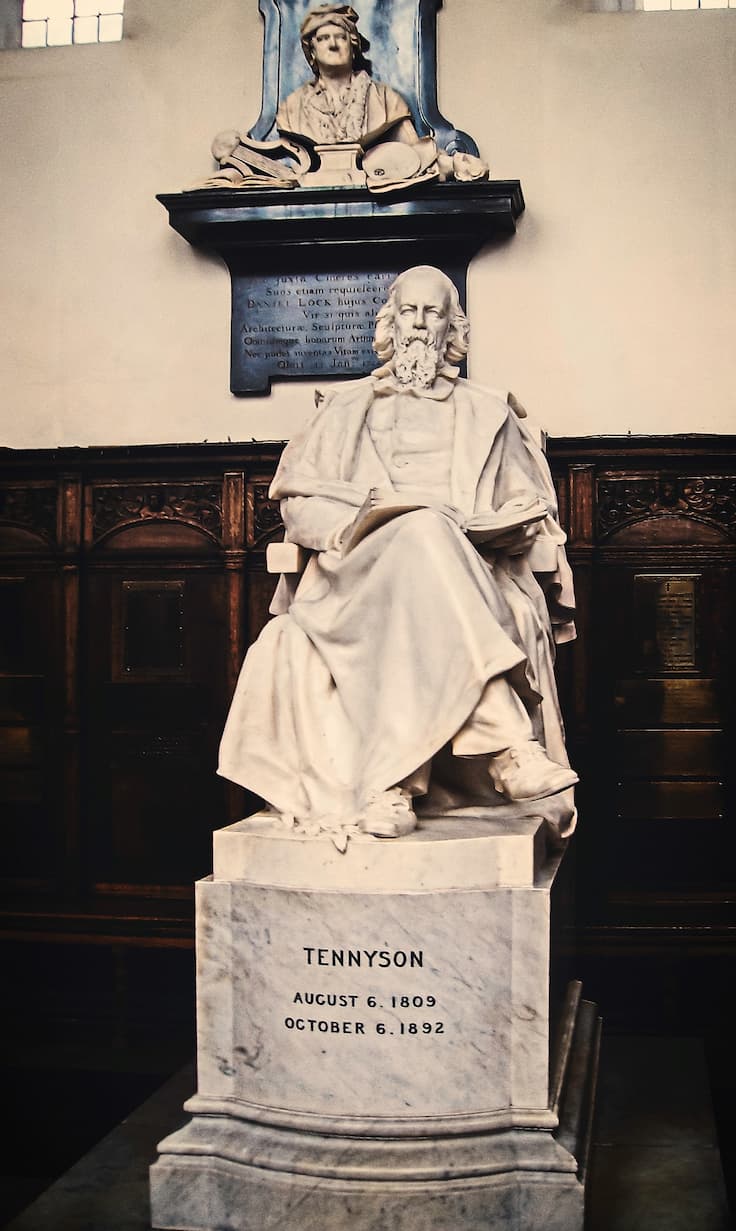Break, Break, Break
The poem Break, break, break is an elegy written by Alfred Tennyson. The poem interweaves the agony of loss and nostalgia. All you need to know and learn about this chapter is given below.
Meet the Author
- Alfred Tennyson was an English poet who became the poet laureate after William Wordsworth in 1850.
- Born: 6 August 1809
- Place of Birth: London
- Died: 6 October 1892
- Major Works: 'Ulyssey', Idylls of the King and The Lady of Shalott.
- Best Known For: He is a Victorian Poet known for his vivid imagery and metric variety.

Summary of the Poem
Break break break is an elegy written by Alfred Tennyson in memory of his best friend Arthur Hallam. Through the poem the poet is emphasizing on the beautiful days he spent with his friend and the agony he suffers from the loss of Arthur.
Break, break, break,
On thy cold gray stones, O Sea!”
The poet is standing on the sea shore watching the waves crash the gray stones. The poem is set in a sad tone mixed with agony, nostalgia and loss. He visualizes and recollects about the joyful youthful days with his friend through the people he sees at the shore.
The sight of the fisherman's boy shouting and playing merrily with his sister and the sailor lad who is singing happy songs sitting on his boat reminds him about the young days he had spent happily with his friend. In the second part of the poem he goes into a philosophical tone.
He watches the stately ships going to their next port. He compares this imagery with life and its journey. Like the ship sailing, life also moves from one point to the other. Whatever happens life keeps on rolling and we are transported to the next phase. He can be referring to the journey between birth and death through these lines.
And the stately ships go on
To their haven under the hill;
He laments about his lost friend by reconnecting him through the phrases ‘the touch of a vanished hand’ and ‘the voice that is still’. These phrases are a direct reference to Arthur Hallam. The waves continue to crash on the rocks and life continues. He continues to cry about how the lost old days are never going to return back to him.
But the tender grace of a day that is dead
Will never come back to me.
In this poem the poet is talking to the readers through images. The death of his friend is implied through the ‘vanished hands’ and the ‘voice that is still’. The image of the ‘ship’ that is going forward implies the cycle of life that waits for none. ‘Sea’ itself is an imagery. Life is like the sea that keeps on going. The waves in the sea never pause, similar is the journey of life.
Share Options
Bonus Info
Victorian Era:
The Victorian era begins from 20 June 1837 with the reign of Queen Victoria and ends with her death on 22nd January 1901. It is considered to be the Golden Era in English Literature. Victorian writers include Emily Bronte, Charles Dickens, Robert Browning, George Eliot, Thomas Hardy so on and so forth. Modern novels and poetry flourished during this period.
Elegy:
Elegy is a poem that reflects and describes the dead. It is mostly written about a person who is near and dear to the author. Other examples of the elegy includes:
- In Memory of W.B Yeats by W. H. Auden
- O Captain! My Captain! by Walt Whitman
Share Options
Get Personalized Tuitions
We offer premium education on a personalized level. Online tuition for all grades, tailor-made!

Break, Break, Break Questions and Answers
Below are a few questions that you can look out for your examinations and class tests. Stand out with perfectly written answers with help of Aneetta Class.
A day that is dead is a reference to A day that cannot be 'relived'. It is a moment or a day that lives only in the memory. In the poem the poet is inferring the days he spent with his friend Arthur Hallam.
Yes, the sea is a useful symbol in the poem. It is because it reflects the poet's mind and displays the trajectory of life. The poet is unable to put together his feelings and his mind is like the roaring sea that crashes on the gray stones. It symbolizes his agoney. Sea can also be a reference to life. Sea never stops, the waves are endless. Similarly, the cycle of life is endless.
Youth and the time spent with his friend are the two things that are never going to return.